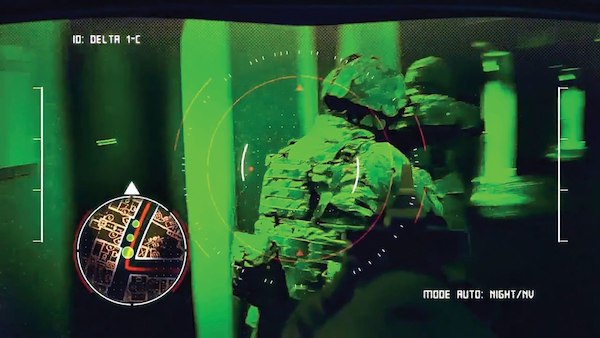When we discuss non-consumer applications for AR / VR systems, we have to add military applications on this list, for sure. Besides the military affinity to new technologies as a way to achieve an edge over any opponent, AR/VR has been used in several forms by the military for a long time.

There are night vision systems that could be seen as a special form of AR systems and then there are the AR system for fighter pilots. The latest push for this technology in the US armed forces is trying to build on available hardware and develop the military specific requirements during an ongoing development. The system is called Integrated Visual Augmentation System (IVAS).
AR in the Military, Source: US Military
In November of 2018, Microsoft scored a major program award for the development of an AR/VR system that allows for various functions based on the Microsoft HoloLens design. The award was for $479 million and includes several steps to develop a military version of the Microsoft ‘Mixed Reality’ hardware. Since then, the first step in the development of the military headset has got under way. If you are interested in the specific requirements from the US military and haven’t seen them yet, you can find the scope here. The document is quite lengthy and makes a case for the use of an AR/VR headset at a soldier and squad level. This means of course pretty substantial numbers further down the road.
Here are the key parameters:
- Head-borne system
- Low profile
- Conformal goggle / visor system
- 24/7 squad situational awareness
- Integrated hearing and vision protection
- Day / night visibility integrated with weapons sights
- Machine learning / artificial intelligence
- Soldier communication
- Physiological feedback system
- Combat training and rehearsal
If this sounds too much like ‘Iron Man’ for you, I would have to agree. But, to be honest, there is a long list of SciFi movies that have exploited the idea of these attributes in next generation soldier armor systems. In a certain way, SciFi authors are like a think tank for the R&D arm of the military everywhere on this planet. I do not think that there is any country which does not have a similar program, I just doubt that anyone is spending this much money on this program.
 IVAS; Source: US Military
IVAS; Source: US Military
Very recently, soldiers, marines and other operators have had a chance to test the the current status of the project at Fort Pickett. Admittedly, the current headsets are commercial off-the-shelf (COTS) hardware with military-specific software and it is expected that military-specific headsets may be available within two years. This timeline may just apply to training units, of course. The demonstration showed how several functions were combined in one unit providing all information to the soldier in the field. It is not really clear how much of this is included in the existing software and how much is planned for future implementations.
While the first headsets maybe used for training and rehearsal exclusively, the ultimate goal is a combat environment-ready device that reminds one more of sunglasses rather than today’s headsets. Further integration will include more sensor and communication technology, as well.
Just recently, SRI International has been awarded a program to develop a low light level CMOS imager to support the IVAS program. This is pretty much in line with the mentioned program goals for night visibility and weapons sights overlay in the IVAS system.
Combine this with the ability of AI- and cloud-based communication and you can see that every soldier in theater will be fed all the information that just one soldier was able to see until now. That means “No more blindspots”, so to say. It is easy to see how this kind of technology will be very helpful for all kinds of critical missions in the search and rescue field including police and fire departments.
So what is the caveat in this new development? First of all the current technology of AR headsets (or mixed reality hardware as they are using the Microsoft HoloLens) is far from anything the US military scope envisions. Headsets are not easy or comfortable to wear and are definitely not built for 24/7 use. Adding more sensors and functions will impact the currently limited battery lifetime and optical performance. I am not saying that we will not be able to build such systems, just not in the next few years.
As we have seen in the past, hackers penetrating computer systems can derail almost any infrastructure and armed forces around the globe. Making the soldier more dependent on computer to computer communication may have the opposite affect to the one intended altogether. Instead of fighting an enemy army, I just have to tell them that the enemy is where it is not. Once you crack the communication there are no limits to how you could derail any opposing force. A very interesting development indeed. – NH

